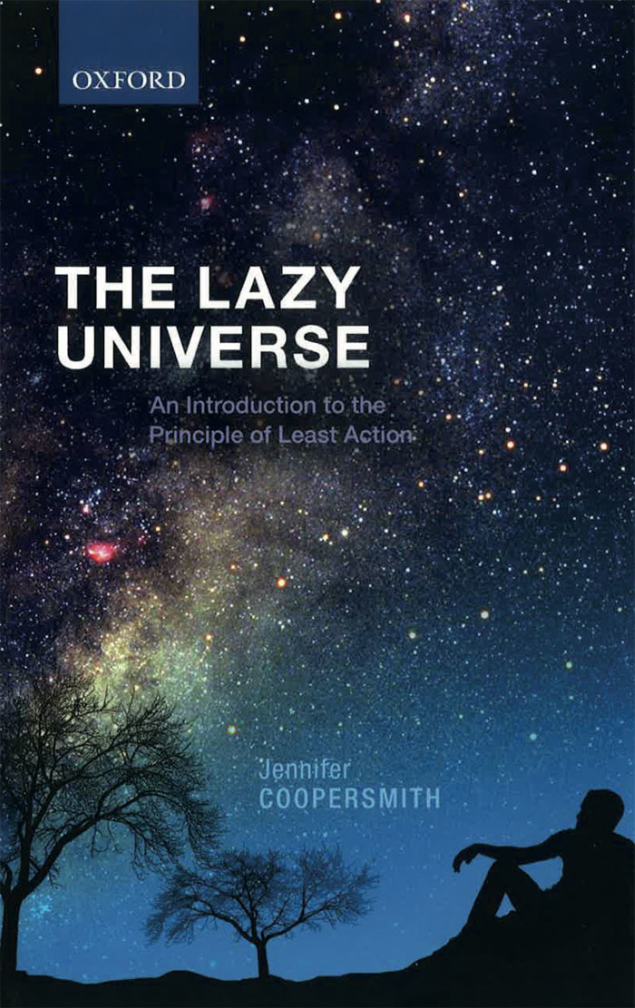By Jennifer Coopersmith
Oxford University Press

With contagious enthusiasm and a sense of humour unusual in this kind of literature, this book by Jennifer Coopersmith deals with the principle of least action or, to be more rigorous, of stationary action. As the author states, this principle defines the tendency of any physical system to seek out the “flattest” region of “space” – with appropriate definitions of the concepts of flatness and space. This is certainly not among the best-known laws of nature, despite its ubiquity in physics and having survived the advent of several scientific revolutions, including special and general relativity and quantum mechanics. The author makes a convincing case for D’Alembert’s principle (as it is often called) as a more insightful and conceptually fertile basis to understand classical mechanics than Newton’s laws. As she points out, Newton and D’Alembert asked very different questions, and in many cases variational mechanics, inspired by the latter, is more natural and insightful than working in Newton’s absolute space, but it can also feel like using a sledgehammer to crack a peanut.
The book starts with a general and very accessible introduction to the principle of least action. Then follows a long and interesting description of the developments that led to the principle as we know it today. The second half of the book delves into Lagrangian and Hamiltonian mechanics, while the final chapter illustrates the relevance of the principle for modern (non-classical) physics, although this theme is also touched upon several times in the preceding chapters.
An important caveat is that this is not a textbook: it should be seen as complementary to, rather than a replacement for, a standard introduction to the topic. For example, the Euler–Lagrange equation is presented but not derived and, in general, mathematical formulae are kept to a bare minimum in the main text. Coopersmith compensates for this with several thorough appendices, which range from classical textbook-like examples to original derivations. She makes a convincing critique of a famous argument by Landau and Lifshitz to demonstrate the dependence of kinetic energy on the square of the speed, and in one of the appendices she develops an interesting alternative explanation.
Although the author pays a lot of credit to The Variational Principles of Mechanics by Cornelius Lanczos (written in 1949 and re-edited in 1970), hers is a very different kind of book aimed at a different public. Moreover, the author has developed several original and insightful analogies. For example, she remarks upon how smartphones know their orientation: instead of measuring positions and angles with respect to external (absolute) space, three accelerometers in the phone measure tiny motions in three directions of the local gravity field. This is reminiscent of the methods of variational mechanics.
Notations are coherent throughout the book and clearly explained, and footnotes are used wisely. With an unusual convention that is never made explicit, the author graphically warns the reader when a footnote is witty or humorous, or potentially perceived as far-fetched, by putting the text in parenthesis.
My main criticism concerns the frequent references to distant chapters, which entangle the logical flow. This is a book made for re-reading and, as a result, it might be difficult to follow for readers with little previous knowledge of the topic. Moreover, I was rather baffled by the author’s confession (repeated twice) that she was unable to find a quote by Feynman that she is sure to have read in his Lectures. Nevertheless, these minor flaws do not diminish my general appreciation for Coopersmith’s very useful and well-written book.
The first part is excellent reading for anybody with an interest in the history and philosophy of science. I also recommend the book to students in physics and mathematics who are willing to dig deeper into this subject after taking classes in analytical mechanics, and I believe that it is accessible to any student in STEM disciplines. Practitioners in physics from any sub-discipline will enjoy a refresh and a different point of view that puts their tools of the trade in a broader context.








